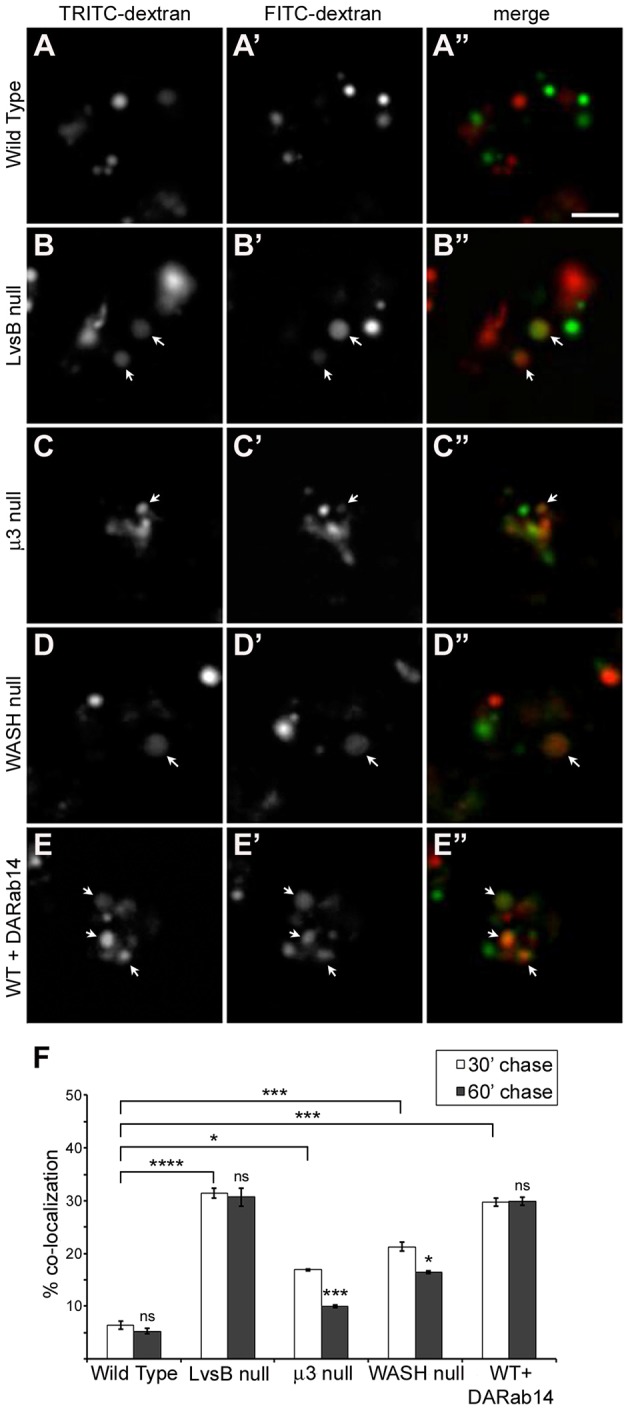Fig. 3.

Longer maturation time causes reduced fusion of early and late endosome populations in fission defect mutants but not in the LvsB-null mutant. Cells were given a pulse of FITC–dextran followed by a 30-min (A–E) or 60-min chase then given a second pulse with TRITC–dextran. Colocalization of the two dextran signals was used as an indicator of fusion events between the two dextran-labeled populations. (F) The fraction of vesicles containing both fluid-phase markers was quantified for three independent experiments and shown as the mean±s.e.m. A one-way ANOVA indicated significant differences in heterotypic fusion between cell lines when a 30-min chase was applied (P<0.0001). ns, not significant, *P<0.05, ****P<0.0001 (two-tailed Student's t-test with Bonferroni correction). We observed significantly more fusion between dextran populations separated by a 30-min chase in the LvsB-null cells (B–B″) compared to wild-type cells (A–A″). Less dramatic increases in fusion were also evident in both the μ3-null (C–C″) and WASH-null (D–D″) fission defect mutants. This increased fusion was partially relieved in both the μ3 and WASH-null cell line with a 60-min chase. This reduction is indicative of a delay in the maturation of late lysosomes into post-lysosomes. In opposition to the fission defect model, LvsB-null cells experienced no reduction in fusion levels with a 60-min chase. This pattern of maturation-independent increased fusion is mimicked in DA-Rab14-expressing cells (E–E″). Arrows indicate vesicles labeled by both TRITC– and FITC–dextran. Scale bar: 5 µm.
